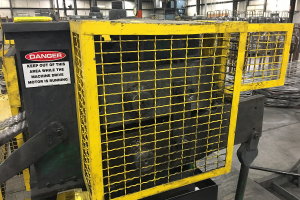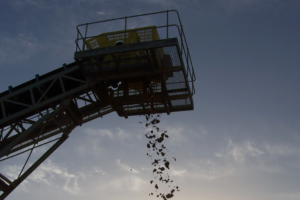Rapid Response Investigations: Beware of OSHA Safe Harbor
Employers should pay close attention to OSHA’s recent revisions to its enforcement procedures on injury reporting, particularly those dealing with Rapid Response Investigations, which the agency frequently asks companies to conduct after a reportable injury.
It has been over a year since OSHA’s revised injury reporting requirements took effect. Employers are now required to report to OSHA any fatality, in-patient hospitalization of a single employee, amputation, or loss of an eye. Shortly before the new reporting requirements took effect, OSHA published what it termed “Interim Enforcement Procedures for New Reporting Requirements.” These guidelines, which have just been revised, explained how OSHA would receive and respond to injury reports under the new rules.
OSHA’s initial interim guidelines called for injuries reported under the new requirements to be placed in one of 3 categories.
- Reports falling into Category 1 (fatalities, hospitalizations of two or more employees, employers with a history of OSHA issues, and other aggravating factors) were to be the subject of an onsite inspection by an OSHA compliance officer.
- For reports falling into Category 2 (hospitalizations of a single employee, amputations, or loss of an eye), OSHA had discretion to determine whether to conduct an onsite inspection, or to ask that the reporting employer conduct what OSHA calls a Rapid Response Investigation, or RRI. When requesting that an employer conduct an RRI, OSHA is essentially asking the employer to investigate the incident and report back to the agency on its cause and what the employer is going to do to make sure that the hazard is eliminated in the future.
- Reports falling into Category 3 (incidents without any aggravating factors) are to be handled solely through RRI requests. OSHA’s data indicates that 62% of the injuries reported in the first year of the new reporting requirements were addressed through a request for an RRI.
Now, with a year of the new reporting rules under its belt, OSHA has issued Revised Interim Enforcement Procedures. While the revised procedures, issued on March 4, 2016, incorporate many of the policies and provisions contained in the initial guidance, there are a few very important additions and changes of which employers should be aware.
First, the new enforcement procedures increase the minimum fine for failure to timely report serious injuries. Under the original interim enforcement guidance, the established penalty for failure to report was $1,000. Under the new guidelines, the established fine is $5,000, with area directors having discretion to issue the maximum fine (currently $7,000, but set to rise to $12,500) if they deem it necessary to deter future violations.
Second, and more importantly, OSHA’s new guidance opens up the possibility that the agency “may conduct monitoring inspections of closed Rapid Response Investigations based on a randomized selection of closed investigations.” In other words, OSHA may “randomly” choose to conduct an inspection of an employer’s worksite even after the employer has submitted a thorough response to an RRI request and OSHA has indicated that the investigation is closed. Curiously, there was no mention of these “monitoring inspections” in OSHA’s initial interim enforcement guidance.
The possibility of an onsite follow-up inspection should make employers think very carefully about the contents of their response to an RRI request. Information provided in an RRI response can (and likely will) be used against the employer in future enforcement actions. OSHA has attempted to allay this concern in its new guidance by stating that “OSHA will not use the employer’s internal investigation to cite a condition(s) discovered by the employer during its internal investigation as long as employees are not exposed to a serious hazard and the employer is taking diligent steps to correct the condition.” This has been referred to as a “safe harbor.”
Employers should be very wary of relying on this purported promise of a “safe harbor.” A closer examination of the plain language used by OSHA indicates that this promise is illusory at best. For example, OSHA’s statement makes clear that the safe harbor will only apply when employees are not exposed to a serious hazard. By definition, any injury or incident that warrants a report to OSHA will also be considered a “serious” hazard by the agency. This caveat swallows any protection promised by the rule.
The safe harbor also will not apply if OSHA decides that the employer is not taking diligent steps to correct the alleged hazard. Anyone who has ever dealt with an OSHA inspection knows that it is very common for OSHA to find fault with even the most comprehensive and protective safety programs. Employers and OSHA often disagree on whether a hazard exists and what is necessary to effectively abate it. Under OSHA’s safe harbor language, any such disagreement means that OSHA is free to use the employer’s RRI response (or any other internal safety audit) against it in future inspections and enforcement actions. OSHA has used employers’ voluntary safety inspections as the basis for citations in the past and, promises of a safe harbor aside, there is no reason to think that the agency will refrain from doing so in the future.
All this means that if your company has a reportable incident that results in a request for an RRI, you should be very cautious in your response. That response can be used against your company not only by OSHA, but also by the injured employee(s) in a workers’ compensation claim or other tort lawsuit. When responding to a request for an RRI, employers should stick to the facts and avoid any speculation or conjecture. They should not admit or concede that an OSHA regulation was violated.
Moreover, although OSHA asks that all RRI responses identify the “root cause” of the incident, an employer does not have to provide a definitive statement as to the cause if it is not known with reasonable certainty. If the RRI identifies an issue, it should be fixed as soon as possible. Regardless of the results of the RRI, employers should take some affirmative action to demonstrate that they are serious about preventing such incidents in the future. Such action could be as simple as conducting refresher training or holding a safety meeting to discuss the incident and how to prevent it in the future.
With inspections at an all-time high, soon-to-be increased penalties, and new reporting rules, OSHA is giving employers plenty to worry about. If your company has a reportable incident and has been asked to submit an RRI, be cautious and consult a safety professional and an experienced OSHA lawyer before you respond. The last thing you want to do is to unnecessarily hand OSHA the very evidence it needs to issue your company costly and burdensome citations and fines.


